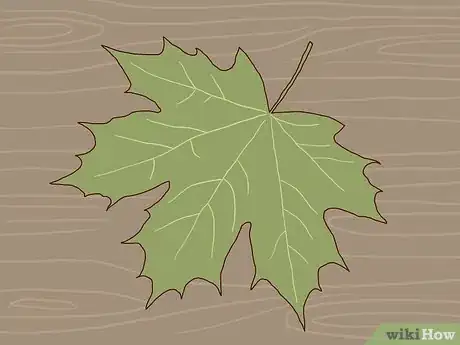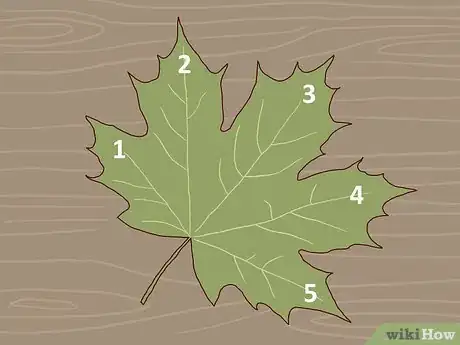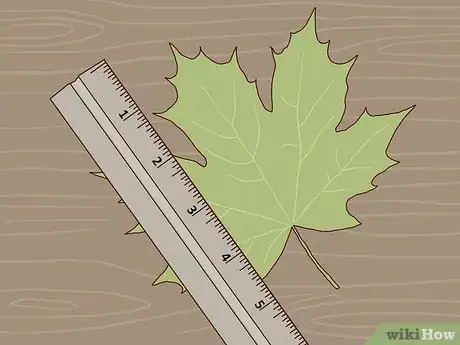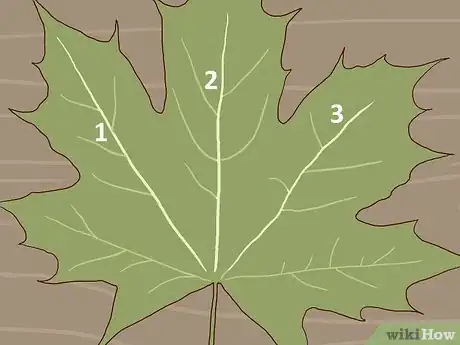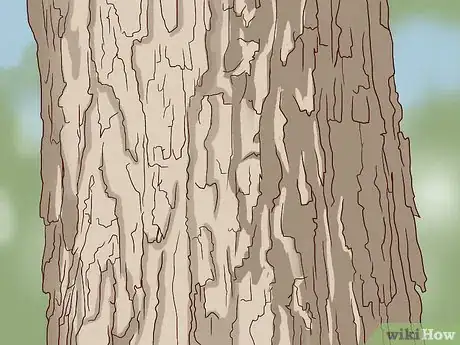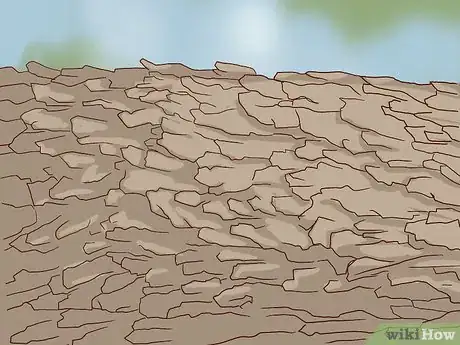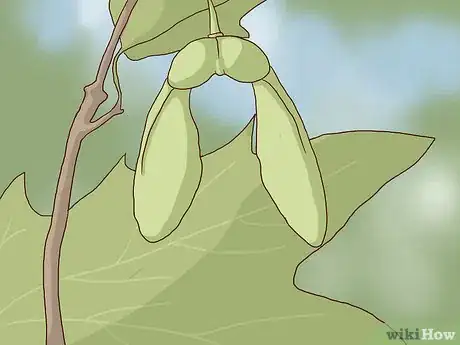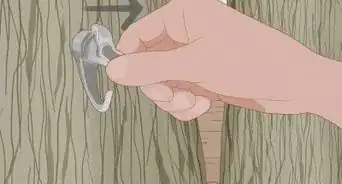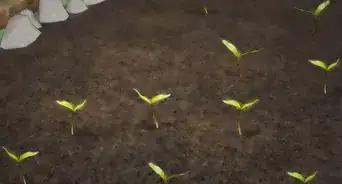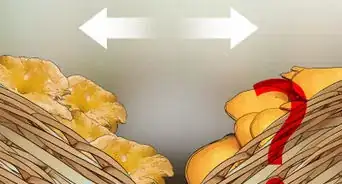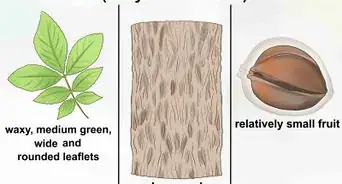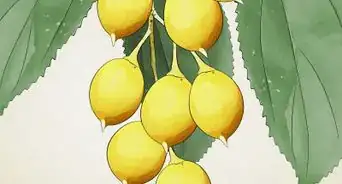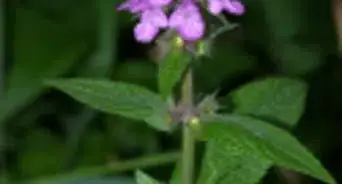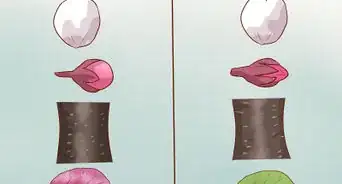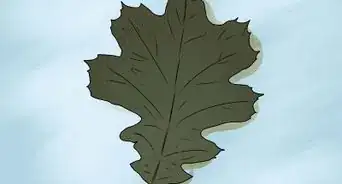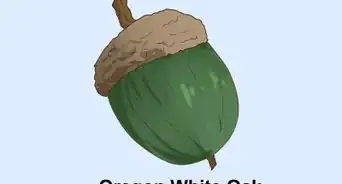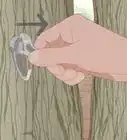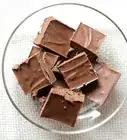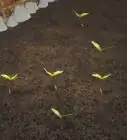This article was co-authored by Michael Simpson, PhD. Dr. Michael Simpson (Mike) is a Registered Professional Biologist in British Columbia, Canada. He has over 20 years of experience in ecology research and professional practice in Britain and North America, with an emphasis on plants and biological diversity. Mike also specializes in science communication and providing education and technical support for ecology projects. Mike received a BSc with honors in Ecology and an MA in Society, Science, and Nature from The University of Lancaster in England as well as a Ph.D. from the University of Alberta. He has worked in British, North American, and South American ecosystems, and with First Nations communities, non-profits, government, academia, and industry.
wikiHow marks an article as reader-approved once it receives enough positive feedback. This article has 20 testimonials from our readers, earning it our reader-approved status.
This article has been viewed 596,771 times.
The sugar maple tree (Acer saccharum) grows abundantly in the northeastern part of North America: the northeastern United States (including as far south as Tennessee) and the southeastern portion of Canada. Sugar maples produce strong timber and yield maple syrup, and both commodities contribute considerably to the economy of the region. The economic significance of the sugar maple is evidenced by its designation as New York’s state tree, and by its central placement on the Canadian flag. Sugar maples can be identified by their distinct leaves, bark, twigs, and by their small fruit.
Steps
Identifying Sugar Maple Trees by their Leaves
-
1Look closely at the color of the leaves. Sugar maple leaves will have a dark green color on the outside, and a lighter green on the underside. In the fall, sugar maple leaves will lose their green color and take on a beautiful orange, yellow, or red.[1]
-
2Count the lobes. Sugar maple leaves are segmented into 5 lobes. There should be three large, main lobes and one smaller lobe on either side. The lobes are characterized by sharp teeth, and are connected by shallow, U-shaped notches.[2]
- Some underdeveloped or stunted sugar maple leaves will have only three or four lobes. If you see a leaf with fewer than five lobes but suspect the tree is a sugar maple, look around and find other leaves, which may be better specimens.
- The leaves of the Silver maple (Acer saccharinum) can be distinguished from those of the Sugar maple. Silver maple leaves have very deep margins between the five lobes, and the underside is silver or white in color.[3]
Advertisement -
3Look closely at the edges of the leaf. Sugar maple leaves have smooth, U-shaped margins between points. The leaves should also be round at the base.[4]
- The sugar maple is the national tree of Canada so if you want an indicator of whether or not you are looking at one, compare the shape of your tree’s leaves to the leaf on the Canadian flag.[5]
- While many other maples also have smooth margins, the extremely common red maple (Acer rubrum) has sharp points and serrated or toothed margins between the lobes. This can be a useful distinguishing feature.[6]
- The sugar maple leaf stalk (also called a “petiole”), which connects the individual leaves to the branch they grow on, should be the same length as (or slightly shorter than) the blades of the leaves.
-
4Examine how the leaves grow out from the twig. Look for leaves that grow perpendicular, or at a right angle, from the twig, in pairs. This is called an opposite orientation. Leaves will grow in “sets” of two, with one leaf always across from another on every twig and branch.[7]
- Only one leaf should grow from each individual stem.
-
5Measure the leaves. Mature leaves on a sugar maple average between 3 inches (7.72 cm) and 5 inches (12.7 cm) long, and are equally as wide.[8]
- If you won’t have a ruler with you in the woods, but are planning to examine tree leaves, measure a segment of one of your fingers. This can serve as an approximate ruler in the field. For example, from the tip of your thumb to the first joint may measure one inch.
-
6Look for three main veins in the leaf. There will be one vein running through each main lobe, but the two smaller lobes on either side of the leaf will not have a vein running through them. These veins are detectable on the underside of the leaf, but lie smooth on top.
- On the underside of the leaves, the veins may appear slightly “hairy.”
Identifying Sugar Maples by their Bark and Twigs
-
1Look for brown, furrowed bark. The bark of sugar maple trees changes color as it ages. The bark of younger trees will be grayish-brown in color. As the sugar maple trees mature, the bark will deepen to a dark brown. It is characterized by vertical grooves that are closely spaced.[9]
- The bark can be described as “furrowed,” and has deep rifts or valleys between each plate of bark.
- Sugar maple trees are often confused with Norway maples (Acer platanoides) in Europe and western Asia. The two are most easily distinguished by their bark: the bark of a young Norway maple is one thin layer. Over time, Norway maple bark will develop vertical fissures, but they are not as deep and pronounced as the fissures of the Sugar maple, and do not lift up as much around the edges of the bark plates. [10]
-
2Examine the edges of the bark. The edges of the plates of bark gradually lift as a sugar maple gets older, and the plates flake away from top to bottom once the tree has reached maturity.[11]
- Mature sugar maple trees may appear “shaggy” from a distance, due to the exaggerated peeling plates of bark that the trees develop.[12]
-
3Inspect the tips of the twigs. Twigs are the small, thin branches that grow out of larger branches, and off of which the individual leaves grow. Look for twigs that are narrow, sleek, and a reddish-brown color.[13] The small buds at the ends of each twig should be covered with tiny brown-colored scales.[14]
- During the winter months, you may find brown, cone-shaped buds growing along the length of the twigs, in an opposite orientation, and 1 larger bud growing straight out from the terminal end of the twigs.[15]
- Twig buds are also useful in distinguishing Sugar maples from Norway maples. The buds of the Norway maple are larger than those of the Sugar maple. Norway maple buds are covered in larger purple scales, which form a rounded tip.[16]
Identifying Sugar Maples by their Fruit
-
1Pick one of the small fruit. Look for fruit that are green, turning brown when mature in the fall. The leaves are “horseshoe” shaped, meaning that each fruit has two leaves that grow from opposite sides of the fruit. The flowers form double-leafed, wing-shaped fruits.[17]
- The paired “wings” connect at the fruit and are oriented to each other at a 60 to 90 degree angle.
-
2Measure the fruit. The fruit should measure about 1 inch (2.54 cm) long, including both “wings.”[18] The wings of a sugar maple grow parallel to one another. The fruit are technically referred to as “samara,” and may also be referred to as a “key.”
- These fruits are sometimes referred to as “seeds.” However, fruit is the correct designation, as the seeds are located inside the fleshy tissue of the sugar-maple fruit.
-
3Identify the paired seed structure. Each sugar maple fruit, located between the two horseshoe-shaped leaves, will have a paired structure. Two distinct fruits, each the size of a small pea, will look as though they have been fused together in the center of each fruit.[19]
Expert Q&A
-
QuestionHow do you identify a sugar maple leaf?
 Michael Simpson, PhDDr. Michael Simpson (Mike) is a Registered Professional Biologist in British Columbia, Canada. He has over 20 years of experience in ecology research and professional practice in Britain and North America, with an emphasis on plants and biological diversity. Mike also specializes in science communication and providing education and technical support for ecology projects. Mike received a BSc with honors in Ecology and an MA in Society, Science, and Nature from The University of Lancaster in England as well as a Ph.D. from the University of Alberta. He has worked in British, North American, and South American ecosystems, and with First Nations communities, non-profits, government, academia, and industry.
Michael Simpson, PhDDr. Michael Simpson (Mike) is a Registered Professional Biologist in British Columbia, Canada. He has over 20 years of experience in ecology research and professional practice in Britain and North America, with an emphasis on plants and biological diversity. Mike also specializes in science communication and providing education and technical support for ecology projects. Mike received a BSc with honors in Ecology and an MA in Society, Science, and Nature from The University of Lancaster in England as well as a Ph.D. from the University of Alberta. He has worked in British, North American, and South American ecosystems, and with First Nations communities, non-profits, government, academia, and industry.
Registered Professional Biologist The leaves' lobes have distinctly pointed tips. They also turn starkly yellow, red or orange in the fall.
The leaves' lobes have distinctly pointed tips. They also turn starkly yellow, red or orange in the fall. -
QuestionCan I make syrup from silver or red maples?
 Community AnswerAccording to the USDA any maple tree sap can make syrup, but silver maple sap is extremely watery and red maple sap has a strong flavor. They recommend tapping mostly sugar maple, and adding red maple to create a more caramel taste. Silver maple can taste bitter late in the season, so it isn't as useful.
Community AnswerAccording to the USDA any maple tree sap can make syrup, but silver maple sap is extremely watery and red maple sap has a strong flavor. They recommend tapping mostly sugar maple, and adding red maple to create a more caramel taste. Silver maple can taste bitter late in the season, so it isn't as useful. -
QuestionWhat is the best time to start tapping a sugar maple tree?
 Community AnswerStart tapping when the temperatures at night are below freezing (32 degrees F), and the daytime temperatures are above freezing. A larger swing in temperature differences (say, 20 degrees at night, to 40+ during the daytime) will often be beneficial, as it causes a sort of "pumping" action as the sap travels up and down in the tree. The best time to start varies, as the temperature swings vary from year to year. Be ready when your forecast indicates the above mentioned differences. Some dates have been as early as late January to mid February, through as late as mid April; just have your taps, tubing, collection containers, and cooking equipment ready to go, and have fun!
Community AnswerStart tapping when the temperatures at night are below freezing (32 degrees F), and the daytime temperatures are above freezing. A larger swing in temperature differences (say, 20 degrees at night, to 40+ during the daytime) will often be beneficial, as it causes a sort of "pumping" action as the sap travels up and down in the tree. The best time to start varies, as the temperature swings vary from year to year. Be ready when your forecast indicates the above mentioned differences. Some dates have been as early as late January to mid February, through as late as mid April; just have your taps, tubing, collection containers, and cooking equipment ready to go, and have fun!
References
- ↑ Michael Simpson, PhD. Registered Professional Biologist. Expert Interview. 25 June 2021.
- ↑ Michael Simpson, PhD. Registered Professional Biologist. Expert Interview. 25 June 2021.
- ↑ https://www.extension.iastate.edu/forestry/iowa_trees/trees/silver_maple.html
- ↑ https://www.dukefarms.org/siteassets/documents/making-an-impact/distance-learning-resources/explore-january---iding-maple-trees.pdf
- ↑ Michael Simpson, PhD. Registered Professional Biologist. Expert Interview. 25 June 2021.
- ↑ https://www.dukefarms.org/siteassets/documents/making-an-impact/distance-learning-resources/explore-january---iding-maple-trees.pdf
- ↑ https://www.dukefarms.org/siteassets/documents/making-an-impact/distance-learning-resources/explore-january---iding-maple-trees.pdf
- ↑ https://edis.ifas.ufl.edu/publication/ST041
- ↑ https://edis.ifas.ufl.edu/publication/ST041
- ↑ http://blogs.pjstar.com/gardening/2014/01/31/winter-identification-of-norway-maple-and-sugar-maple/
- ↑ https://extension.umaine.edu/signs-of-the-seasons/indicator-species/sugar-maple-fact-sheet/
- ↑ http://blogs.pjstar.com/gardening/2014/01/31/winter-identification-of-norway-maple-and-sugar-maple/
- ↑ https://edis.ifas.ufl.edu/publication/ST041
- ↑ http://blogs.pjstar.com/gardening/2014/01/31/winter-identification-of-norway-maple-and-sugar-maple/
- ↑ http://blogs.pjstar.com/gardening/2014/01/31/winter-identification-of-norway-maple-and-sugar-maple/
- ↑ http://blogs.pjstar.com/gardening/2014/01/31/winter-identification-of-norway-maple-and-sugar-maple/
- ↑ https://extension.umaine.edu/signs-of-the-seasons/indicator-species/sugar-maple-fact-sheet/
- ↑ https://edis.ifas.ufl.edu/publication/ST041
- ↑ https://extension.umaine.edu/signs-of-the-seasons/indicator-species/sugar-maple-fact-sheet/
About This Article
To identify sugar maple trees, start by looking at the leaves. In the spring and summer, the leaves will be a dark green shade with a light green color on the underside, and in the fall, they can be orange, yellow, or red. On the leaf, check that there are 3 large lobes and 2 smaller lobes off to the sides of the stem, with smooth U-shaped edges around the leaf. On the tree, look for the “helicopter” shaped fruit that has 2 wings and a pair of seeds fused in the middle. For tips on identifying the tree by its bark and twigs, read on!
